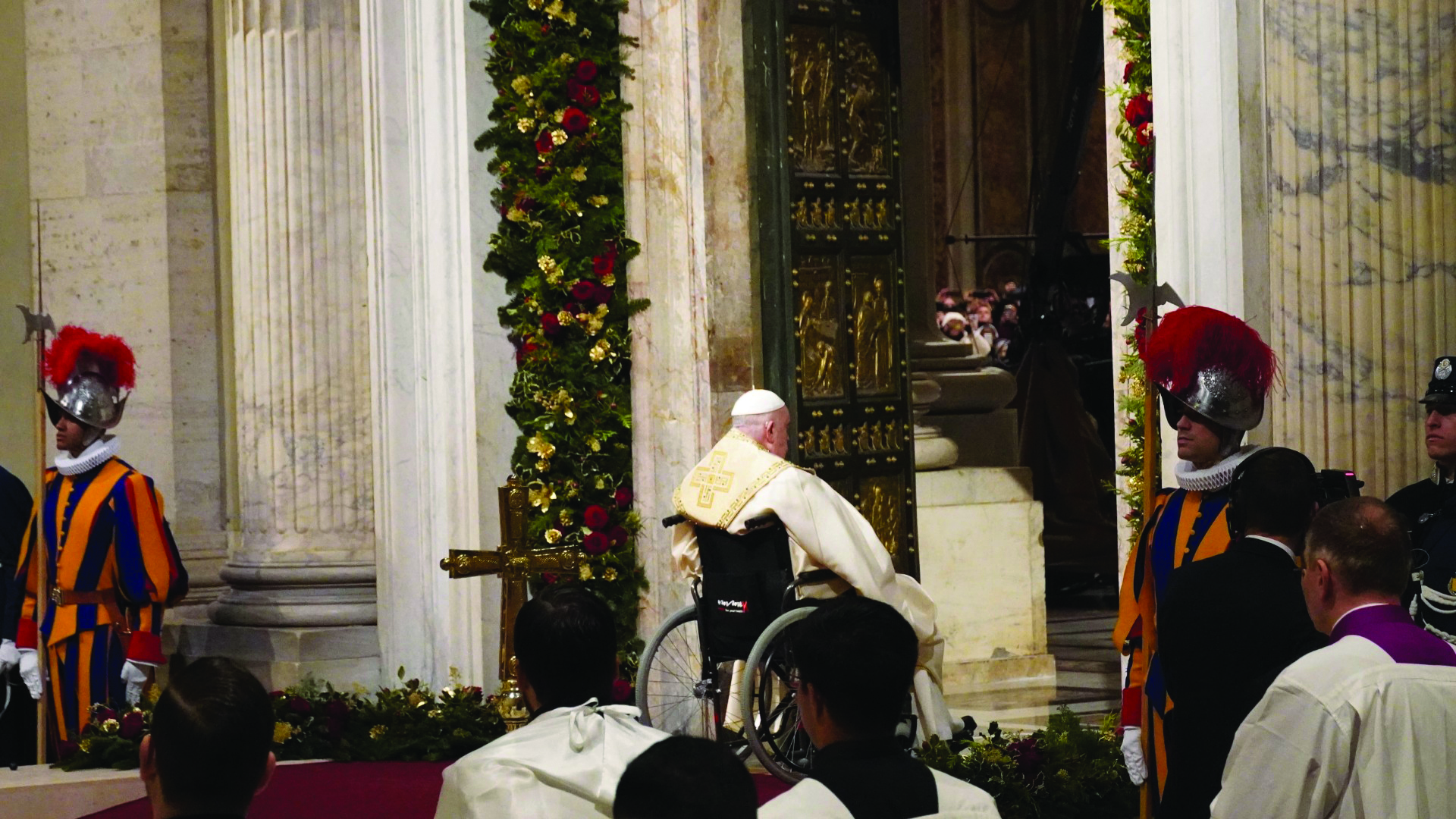By Father Anthony Dao
Photo Credit: Daniel Ibanez/ Catholic News Agency.
During a ceremony in front of the Holy Door of St. Peter’s Basilica, on the Feast of the Ascension of the Lord, May 9, 2024, Pope Francis issued a Decree announcing the Holy Year 2025 with the title “Spes Non Confundit - Hope Does Not Disappoint.” (Rom 5: 5)
In 25 paragraphs he presented hope as the desires of our life, expecting and waiting for good things to happen, though we do not know what the future may bring. He wished that those who are discouraged, pessimistic and cynical about the future; those who could not feel much happiness in life, will receive God’s Word and Mercy to help them during the Holy Year to find reasons for real hope.
Globally, the Pope’s decree called on all nations to end the tragedy of wars. All people should remember that those who are the peace-makers are called children of God.
Spes Non Confundit also reminded people that the protection of Creation is the responsibility of all, continuing the Pope’s message for the World Day of Prayer for Care of Creation on September 11, 2024.
Socially, the Pope in Spes Non Confundit calls us to give special care to those who are marginalized – the poor, the prisoners, migrants, the sick, the elderly, young men and women affected by drugs and corruption in society. He requested the forgiveness of debt for poor countries, promoted the beauty of life and the parental joy of bringing children into the world.
Religiously, he strongly believed that God’s mercy is here and now. Through the Sacrament of Reconciliation, we can feel and touch God’s love.
He also hoped that during this Holy Year, there will be an ecumenical celebration, in which all Christians will come and share the same love from the salvation of Jesus. In the spirit of solidarity, all baptized Christians will be able to share the new visible signs of the evangelization, and to be the witness to God’s presence in the world.
Patience is a needed virtue for the Holy Year. In this time of the Internet, quickness is more favored than patience; patience has no place to grow. But if we have patience, we can appreciate the changes of the seasons and the harvests, observe the life of animals and their cycles of growth, and enjoy the clarity of Saint Francis’ vision when he called the sun ‘brother’ and the moon ‘sister.’
Declaration of the New Holy Year
The Pope, after giving a short history of the Holy Year, said: “Sustained by this great tradition, and certain that the Jubilee Year will be for the entire Church a lively experience of grace and hope, I hereby decree that the Holy Door of the Basilica of Saint Peter in the Vatican will be opened on 24 December 2024, thus inaugurating the Ordinary Jubilee.”
It is noted that there are two types of Holy Years: one is ordinary, and the other is extraordinary. An Ordinary Holy Year, which is also known as a Jubilee, takes place every 25 years.
An extraordinary Holy Year is for a special occasion, e.g. when Pope Francis declared a Year of Mercy in 2016 to emphasize his desire to present the Church as merciful and welcoming rather than distant.
What is a Holy Year?
In the Catholic tradition, a Holy Year is a great religious event. It is a year of forgiving the punishment due to sin. It is a year of reconciliation between adversaries or enemies. It is also a year of self-conversion and receiving the Sacrament of Reconciliation. Consequently, solidarity, hope, peace, justice and love are born.
Holy Year in the Old Testament
The Holy Year is not “man-made”, meaning created by humans to add more solemnity or celebrations. The origin of the Holy Year can be found in the Old Testament. Leviticus 25: 8 -14 reads:
“You shall count seven weeks of years—seven times seven years—such that the seven weeks of years amount to forty-nine years.
Then, on the tenth day of the seventh month, let the ram’s horn resound; on this, the Day of Atonement, the ram’s horn blast shall resound throughout your land.
You shall treat this fiftieth year as sacred. You shall proclaim liberty in the land for all its inhabitants. It shall be a jubilee for you, when each of you shall return to your own property, each of you to your own family.
This fiftieth year is your year of jubilee; you shall not sow, nor shall you reap the aftergrowth or pick the untrimmed vines.
Since this is the jubilee. It shall be sacred for you. You may only eat what the field yields of itself.
In this year of jubilee, then, each of you shall return to your own property.
Therefore, when you sell any land to your neighbor or buy any from your neighbor, do not deal unfairly with one another.”
Looking at pictures on YouTube, we often see an image of a Jewish Rabbi holding a trumpet announcing this special year. This trumpet, made of a goat horn, called yobel in Hebrew, means joy. From the word yobel comes the word Yubilee.
Holy Year in the New Testament
In the New Testament, Jesus presented himself as the one who completed the old Jubilee, because he came to “preach the year of the Lord’s favor.” Isaiah 61: 1-2 proclaimed:
“The spirit of the Lord God is upon me, because the Lord has anointed me;
He has sent me to bring good news to the afflicted, to bind up the brokenhearted,
To proclaim liberty to the captives, release to the prisoners,
To announce a year of favor from the Lord and a day of vindication by our God; To comfort all who mourn”
Jesus emphasized more clearly about Himself, who is the Holy Year and who brings the Holy Year to people:
“The Spirit of the Lord is upon me, because he has anointed me to bring glad tidings to the poor.
He has sent me to proclaim liberty to captives and recovery of sight to the blind, to let the oppressed go free, and to proclaim the year of the Lord’s favor.”
Fr. Anthony Dao is a retired priest of the diocese.





